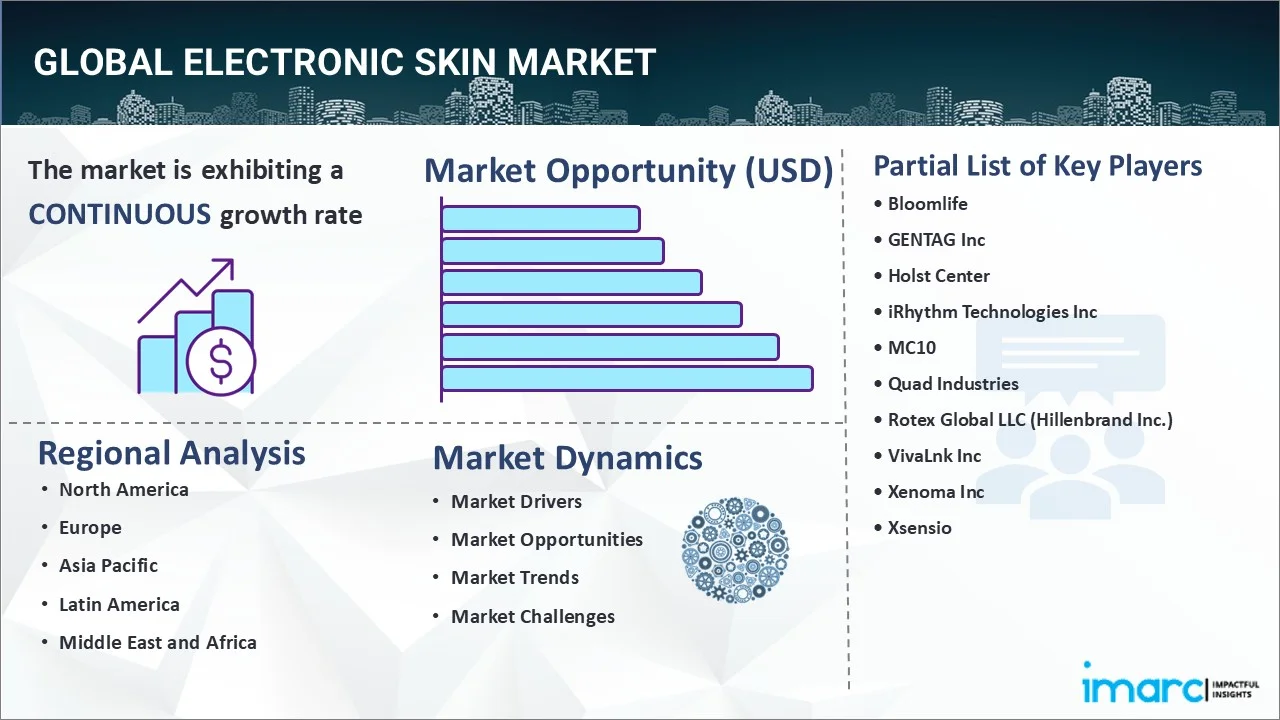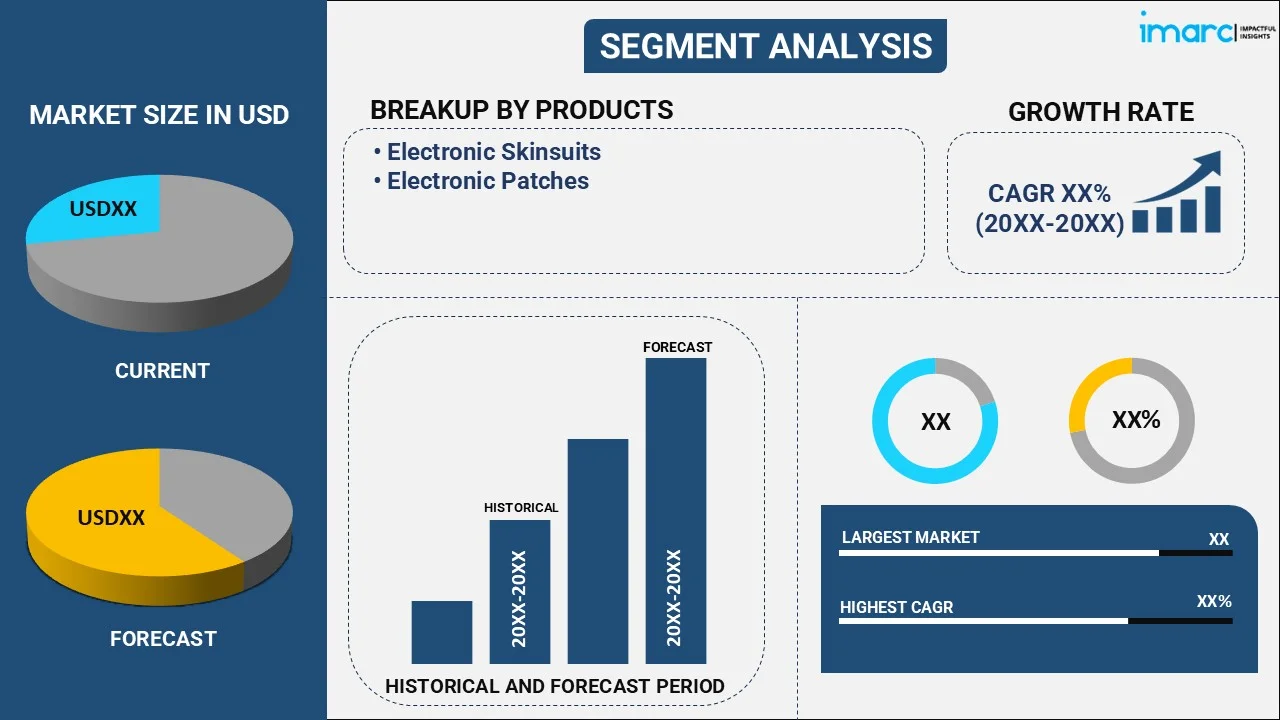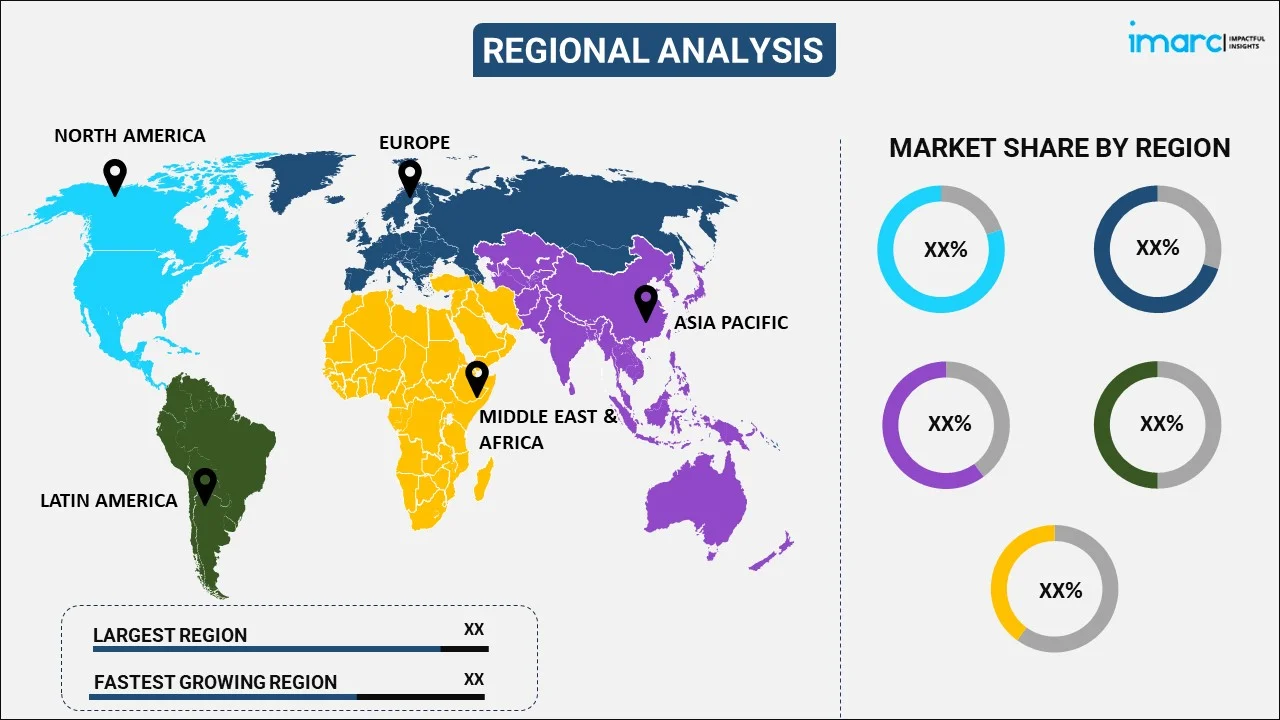
Electronic Skin Market Report by Product (Electronic Skinsuits, Electronic Patches), Component (Stretchable Circuits, Photovoltaics Systems, Stretchable Conductors, Electroactive Polymers), Sensor (Tactile Sensors, Chemical Sensors, Electrophysiological Sensors, and Others), Application (Health Monitoring Systems, Drug Delivery Systems, and Others), and Region 2025-2033
Market Overview:
The global electronic skin market size reached USD 10.2 Billion in 2024. Looking forward, IMARC Group expects the market to reach USD 41.2 Billion by 2033, exhibiting a growth rate (CAGR) of 15.92% during 2025-2033.
|
Report Attribute
|
Key Statistics
|
|---|---|
|
Base Year
|
2024
|
|
Forecast Years
|
2025-2033
|
|
Historical Years
|
2019-2024
|
|
Market Size in 2024
|
USD 10.2 Billion |
|
Market Forecast in 2033
|
USD 41.2 Billion |
| Market Growth Rate 2025-2033 | 15.92% |
Electronic skin, or e-skin, is a flexible, self-healing and wearable product consisting of a stretchable network of sensors and electronics to replicate the functioning of human or animal skin. It senses heat, pressure and temperature through chemical, tactile and electrophysiological sensors, actuators, processors and communication units to respond to the ecological stimuli. These patches aid in monitoring the vital signs of the body with minimal or no discomfort to the user. They are also connected with mobile operating systems, which are utilized in health surveillance devices, such as fitness bands and watches. As a result, electronic skin finds extensive application for humanoids, artificial prosthetics, biomedical instrumentation and cyber-physical systems.

The widespread adoption of electronic wearable devices, robotics, and prosthetics among the masses is one of the key factors driving the growth of the market. Furthermore, significant improvements in the healthcare infrastructure, especially in the developing economies, are providing a thrust to the market growth. Electronic skin is widely used for real-time and continuous monitoring of body temperature, tissue pressure, electrolyte balance, disease-related biomarkers and body motion for on-body health and physiological check-ups. Additionally, various technological advancements, such as the development of 3D printed and artificial intelligence (AI)-integrated lightning and sweating electronic skins, are acting as other growth-inducing factors. Product manufacturers are also emphasizing on using green materials while developing electronic skins to minimize the carbon emissions. Other factors, including rising expenditure capacities of the consumers, along with extensive research and development (R&D) activities in the field of artificial skin generation, are anticipated to drive the market further.
Key Market Segmentation:
IMARC Group provides an analysis of the key trends in each sub-segment of the global electronic skin market report, along with forecasts at the global, regional and country level from 2025-2033. Our report has categorized the market based on product, component, sensor and application.
Breakup by Product:

- Electronic Skinsuits
- Electronic Patches
Breakup by Component:
- Stretchable Circuits
- Photovoltaics Systems
- Stretchable Conductors
- Electroactive Polymers
Breakup by Sensor:
- Tactile Sensors
- Chemical Sensors
- Electrophysiological Sensors
- Others
Breakup by Application:
- Health Monitoring Systems
- Drug Delivery Systems
- Others
Breakup by Region:

- North America
- United States
- Canada
- Asia-Pacific
- China
- Japan
- India
- South Korea
- Australia
- Indonesia
- Others
- Europe
- Germany
- France
- United Kingdom
- Italy
- Spain
- Russia
- Others
- Latin America
- Brazil
- Mexico
- Others
- Middle East and Africa
Competitive Landscape:
The competitive landscape of the industry has also been examined along with the profiles of the key players being Bloomlife, GENTAG Inc, Holst Center, iRhythm Technologies Inc, MC10, Quad Industries, Rotex Global LLC (Hillenbrand Inc.), VivaLnk Inc, Xenoma Inc and Xsensio.
Report Coverage:
| Report Features | Details |
|---|---|
| Base Year of the Analysis | 2024 |
| Historical Period | 2019-2024 |
| Forecast Period | 2025-2033 |
| Units | Billion USD |
| Segment Coverage | Product, Component, Sensor, Application, Region |
| Region Covered | Asia Pacific, Europe, North America, Latin America, Middle East and Africa |
| Countries Covered | United States, Canada, Germany, France, United Kingdom, Italy, Spain, Russia, China, Japan, India, South Korea, Australia, Indonesia, Brazil, Mexico |
| Companies Covered | Bloomlife, GENTAG Inc, Holst Center, iRhythm Technologies Inc, MC10, Quad Industries, Rotex Global LLC (Hillenbrand Inc.), VivaLnk Inc, Xenoma Inc and Xsensio |
| Customization Scope | 10% Free Customization |
| Post-Sale Analyst Support | 10-12 Weeks |
| Delivery Format | PDF and Excel through Email (We can also provide the editable version of the report in PPT/Word format on special request) |
Key Questions Answered in This Report:
- How has the global electronic skin market performed so far and how will it perform in the coming years?
- What has been the impact of COVID-19 on the global electronic skin market?
- What are the key regional markets?
- What is the breakup of the market based on the product?
- What is the breakup of the market based on the component?
- What is the breakup of the market based on the sensor?
- What is the breakup of the market based on the application?
- What are the various stages in the value chain of the industry?
- What are the key driving factors and challenges in the industry?
- What is the structure of the global electronic skin market and who are the key players?
- What is the degree of competition in the industry?
Need more help?
- Speak to our experienced analysts for insights on the current market scenarios.
- Include additional segments and countries to customize the report as per your requirement.
- Gain an unparalleled competitive advantage in your domain by understanding how to utilize the report and positively impacting your operations and revenue.
- For further assistance, please connect with our analysts.
 Inquire Before Buying
Inquire Before Buying
 Speak to an Analyst
Speak to an Analyst
 Request Brochure
Request Brochure
 Request Customization
Request Customization




.webp)




.webp)












